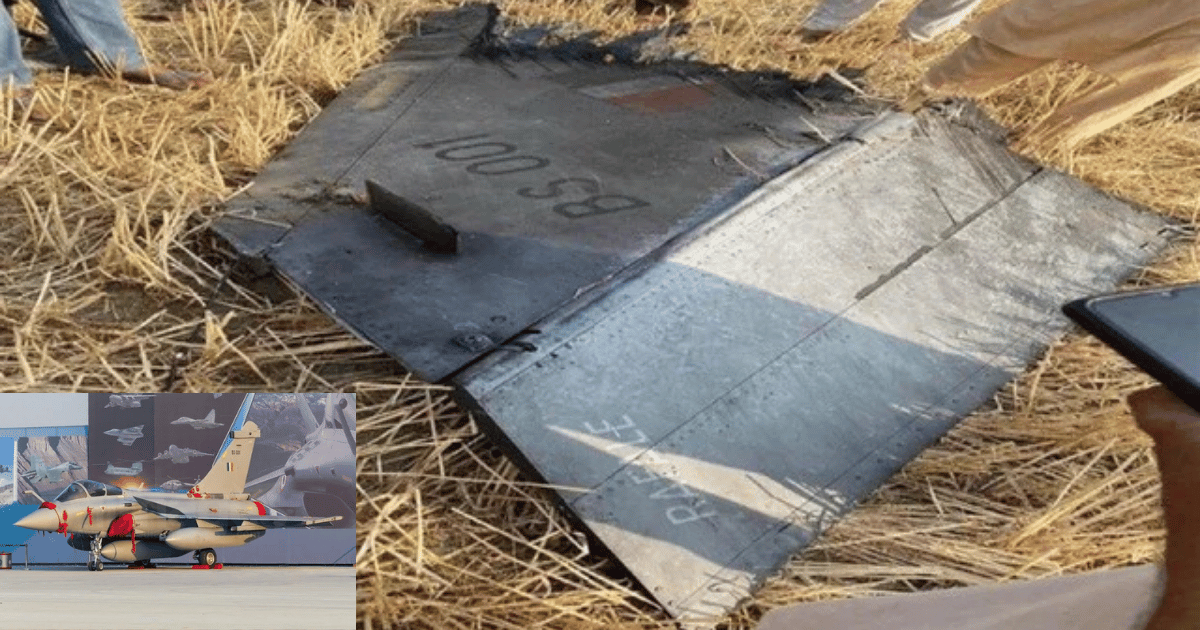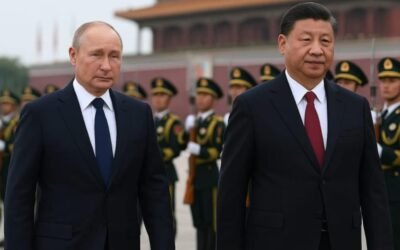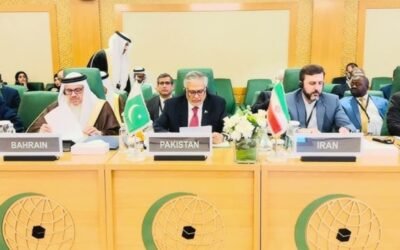In the wake of the Pahalgam attack on 22nd April 2025, without any formal inquiry into the causes, the Indian government unequivocally put the blame on Pakistan. There was no evidence of Pakistan’s involvement, and neither did the Modi government agree to their offer for an independent investigation into the matter. It is now widely believed that the attack was a false flag operation aimed at finding an excuse to withdraw from the Indus Water Treaty, a bilateral water-sharing agreement between Pakistan and India under the auspices of the World Bank. The attack had the same design as the Pulwama attack, and now, most officials are accepting that PM Modi has a pattern of using such attacks for his electoral campaigns:
In December 2018, I had predicted that Modi would take India to a war situation with Pakistan before 2019 general election. This is how Pulwama happened before the election! pic.twitter.com/U1sRt13mKW
— Ashok Swain (@ashoswai) April 14, 2023
The two weeks after the attack saw intense anti-Pakistan propaganda on Indian news channels and calls for war.
India blamed Pakistan within 10 minutes of the Pahalgam attack in a town 30 mins from the nearest police station, 300KM from the border. With over 300,000 troops and paramilitary forces in Kashmir, terrorists still got through? No probe, no proof, just propaganda. The world isn’t…
— Mansoor Ahmed Qureshi (@MansurQr) July 5, 2025
India’s Warmongering and LOC Violations
There were violations on the Line of Control (LOC) by the Indian Border Security Force (BSF), and their intensity was increasing day by day. Pakistani troops stationed across the LOC were retaliating while staying within their own territory and were mostly on the defensive. Indian media, along with the majority of its citizens, were calling for death upon Pakistan, citing terrorist groups supposedly being sheltered in Pakistan. If anything, Operation Sindoor was a culmination of this war-mongering and anti-Pakistan rhetoric widely spread through the media at the time.
French Media exposed how Modi regime stooped to manufacturing war hysteria using AI-generated images and videos to frame Pakistan on #PahalgamAttack. This isn’t national security, it’s state-sponsored deception. From #Pulwama to #Pahalgam, war mongering & hate is their narrative. pic.twitter.com/fDz7Si3mlO
— Dr Shama Junejo (@ShamaJunejo) May 4, 2025
The operation was strategically named to honor a widowed woman in the attack, bereft of Sindoor, which is a vermilion sign of marriage in Hindu traditions. The naming had the desired effect of appealing to the Hindu-majority nation and reinforcing the state narrative that Indian Hindus were killed by Pakistani terrorists in Pahalgam, a classic time-tested tactic for creating a divide.
Military Misadventures
Pakistanis, with their unwavering resolve in the face of crisis, resorted to humor to cope with the situation, which did not sit well with their Indian counterparts. Not only was the Indian army under pressure from its own people to take revenge for a so-called terrorist attack, but Pakistan’s refusal to bite and avoid initiating any armed conflict further pushed them to launch an operation. Operation Sindoor was launched on the night of May 6th-7th, with IAF jets and cruise missiles striking nine targets across PoK and Punjab, supposedly targeting terrorist camps, but in reality, civilians were killed and injured. The mission, as claimed by Indian officials, was to target terrorist logistics through precision strikes. It was asserted that these targets were hit, although the reality was the destruction of a mosque in Bahawalpur and the killing of a toddler in Muzaffarabad.
This footage was originally captured by a Pakistani individual using a quadcopter drone shortly after the attack. It clearly shows that the mosque was struck and damaged by the Indian Air Force.
Later, Indian sources cropped the original video and overlaid a fake OSD (On-Screen… https://t.co/S7DKu8NVKF pic.twitter.com/UxIDT0jhRn
— Eagle Eye (@zarrar_11PK) June 9, 2025
While military analysts observe India’s skillful use of BrahMos, SCALP-EG, and drones for deeper penetration into Pakistani territory, this is overshadowed by the fact that Pakistani drone payloads and short-range ballistic missiles used to counter these advanced weapons were much cheaper and locally manufactured, leading to heavy losses despite low costs. However, the advantage of sophisticated military hardware and the tactical edge was short-lived. Pakistan’s retaliation included downing Indian jets, including French Rafales, using locally manufactured JF-17 Thunders and Chinese J-10 fighters, both with minimal combat experience compared to the battle-hardened jets used by the IAF.
Wreckage of a Snecma M88-2 turbofan engine, used in the Indian Air Force’s Dassault Rafale Multirole Fighters, has been found in India. The area has been cordoned off by the Indian Army. pic.twitter.com/EIPxazz2Iq
— OSINTWarfare (@OSINTWarfare) May 7, 2025
For a military that initiated the conflict, the Indian offensive lacked the necessary foresight and planning to execute a successful attack. The losses were also accepted by the Indian military leadership, though it was done through a very twisted use of words.
For the 2nd time in a day, CDS Anil Chauhan has acknowledged that India suffered losses and jets was/were downed.
When the same question was asked by Rahul Gandhi Ji, BJP trolls called him anti-national.
Will BJP troll attack CDS also…? pic.twitter.com/q5LI3MPYm9
— Shantanu (@shaandelhite) May 31, 2025
Indian Propaganda Exposed
Despite bold claims of a tactical victory, little was actually accomplished. India’s strategic communications failed significantly, as most of their press briefings appeared reactive and lacked clarity or coordination. Many officials also avoided answering direct questions about Indian losses and have not provided a clear figure so far. There was neither confirmation nor denial of Pakistani claims, which led to ambiguity and a general sense of disappointment among the Indian public.
“I do not want to comment on our losses — that might give our opponent an advantage” says Indian Air Marshl A.K Bharti, During the Indian D.G MO’s briefing, when a reporter asks him if the Rafale jets have been taken down by Pakistan. He does not deny it. pic.twitter.com/Zd23NAspv9
— Iftikhar Firdous (@IftikharFirdous) May 11, 2025
As has always been the tradition of the Indian media, a fog of misinformation clouded the truth, preventing Indian citizens from seeing the real conditions on the ground of the conflict. The ongoing war-mongering and hate speech shifted focus away from the true issue: Who carried out the Pahalgham attack and how did it happen in a highly militarized area like Pahalgham, right under the noses of Indian Intelligence?
A Reality Check
If anything, the conflict gave the Indian military top brass a serious reality check. It demonstrated that superiority in expensive weaponry, foreign jets, and drones does not guarantee victory. Manpower quantity is irrelevant without clear communication and coordination based on sound military planning. Even if there was any tactical success, it was overshadowed by the losses sustained. Despite being technologically advanced, India struggled to control the PR narrative, with serious lapses in storytelling. There was also a decline in the morally upright image India aimed to maintain, as civilian casualties and missed targets damaged its reputation. It is only predictable that a conflict initiated over a false flag operation might not conclude well for its perpetrators, and in India’s case, the truth emerged faster than expected. Another strategic mistake was underestimating Pakistan’s military strength by a country that had already faced the consequences of doing so in 2019 during Operation Swift Retort. Overreliance on imported military equipment has always been one of India’s biggest shortcomings, and it seems unlikely to change anytime soon, especially considering CDS General Chauhan’s remarks.
‘Can’t win today’s warfare with yesterday’s weapons’, says CDS Anil Chauhan as he cites ‘Operation Sindoor’https://t.co/vzuASOcHqF
— Hindustan Times (@htTweets) July 16, 2025
In conclusion, if the last five years have taught us anything, it is that while India is good at starting conflicts, Pakistan is certainly well-versed in ending them, and their restraint in escalating warfare should not be seen as a weakness but as a subtle warning.







